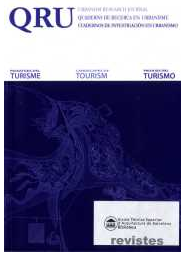Prácticas del paisajismo francés: la construcción del proyecto del paisaje en el plan turístico Maspalomas Costa Canaria, 1961
DOI:
https://doi.org/10.5821/qru.9590Abstract
The Maspalomas Costa Canaria master plan designed in 1961 represented the beginning of a new urban practice in the European tourism planning based on the landscape as principle of urban design. Over the 60s were developed the most important urban and rural landscape operations in the metropolitan área of Paris. The grand ensembles based on housing plans were promoted by the state urban policy in order to close the existing housing deficit in the dense cities of France. During 60s a new framework in the landscape operations and the solutions used to develop the grand ensembles were the keys to design the Maspalomas Costa Canaria master plan as one of the firsts advanced tourism plans in Europe. The main goal of this research pretends to highlight a strong correlation among the Maspalomas master plan, the AS atelier (architects of master plan) and the French landscape vision.Downloads
Issue
Section
License
Those authors who have publications with this journal, accept the following terms:
a. Authors will retain their copyright and guarantee the journal the right of first publication of their work, which will be simultaneously subject to the Creative Commons CC BY-NC-ND-4.0 recognition license that allows third parties to share the work provided that its author and its first publication are indicated in this journal, but they cannot be changed or used commercially.
b. Authors may adopt other non-exclusive license agreements for the distribution of the version of the published work (eg: deposit it in an institutional telematic archive or publish it in a monographic volume) provided that the initial publication in this journal is indicated.
c. Authors are allowed and recommended to disseminate their work through the Internet (e.g. in institutional telematic files or on their website) before and during the submission process, which can lead to interesting exchanges and increase citations. of the published work. (See The effect of open access).













